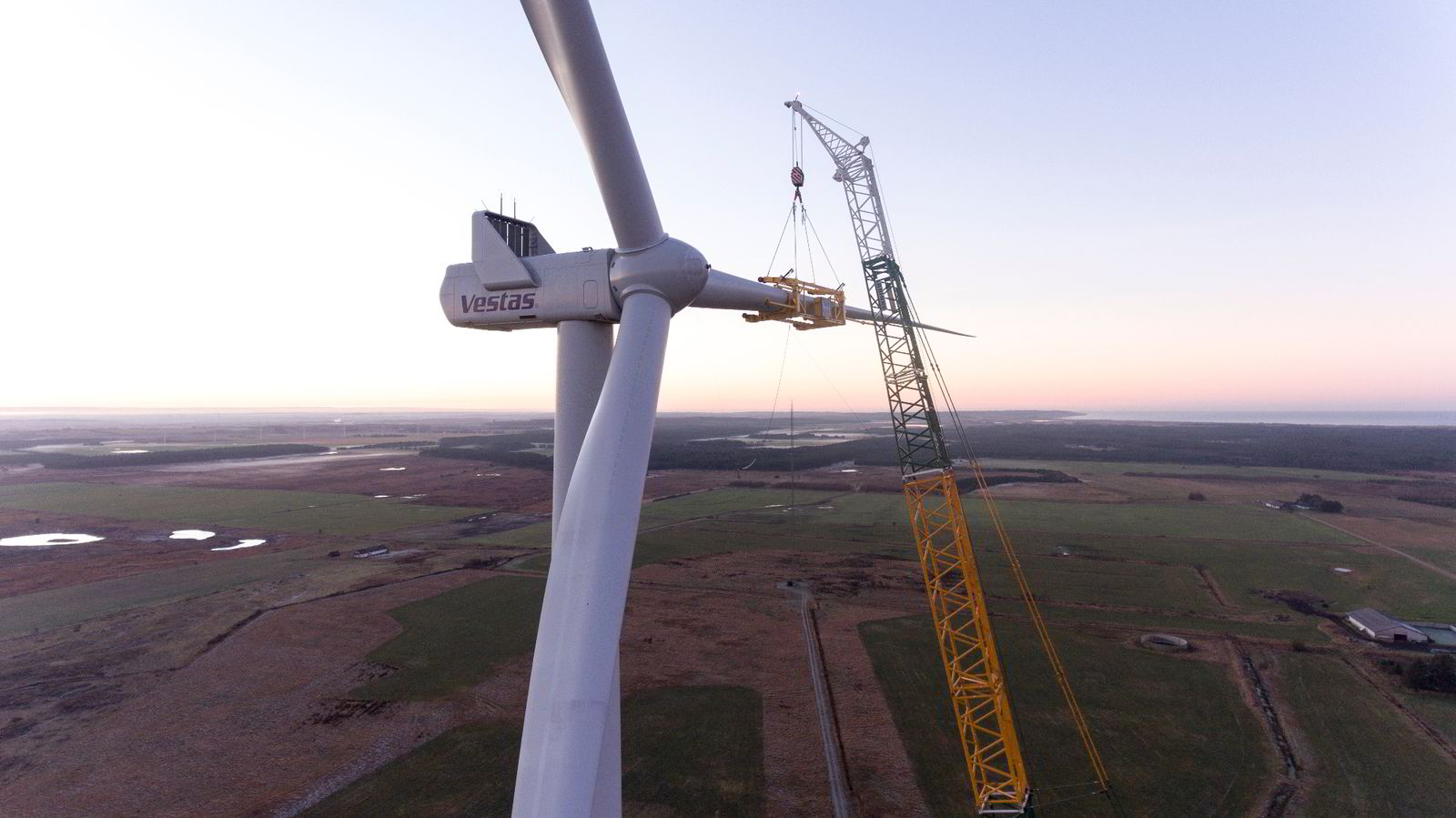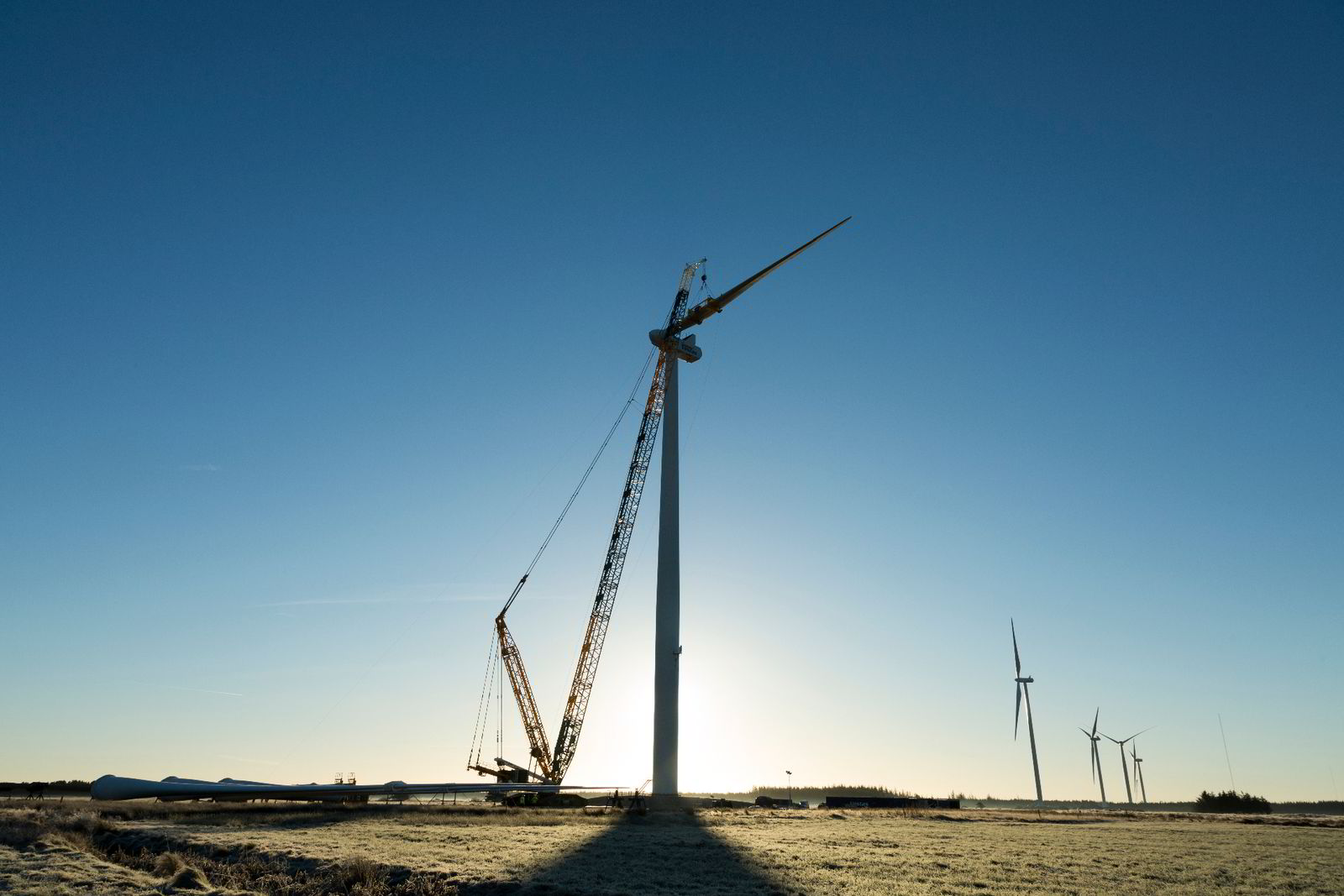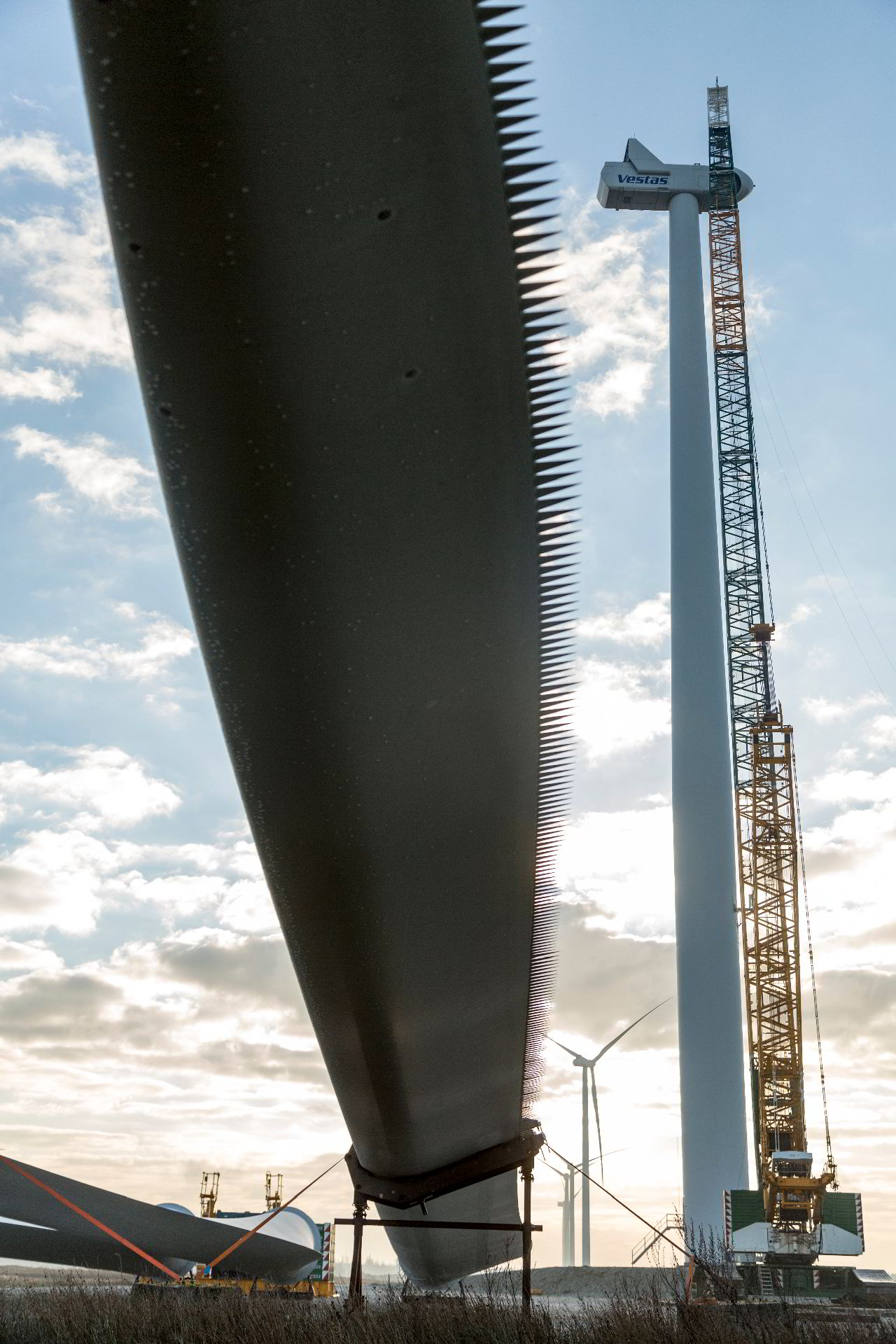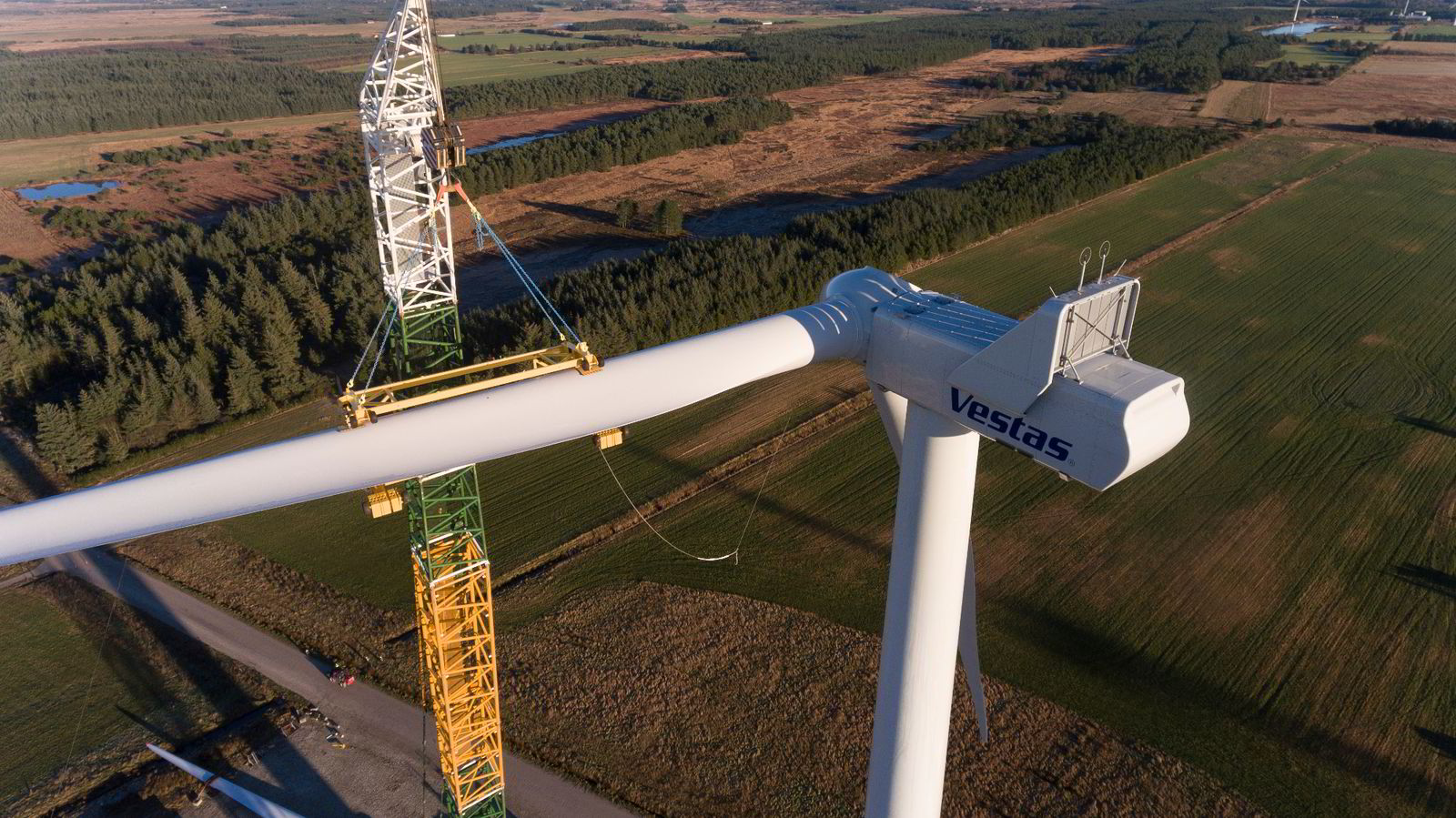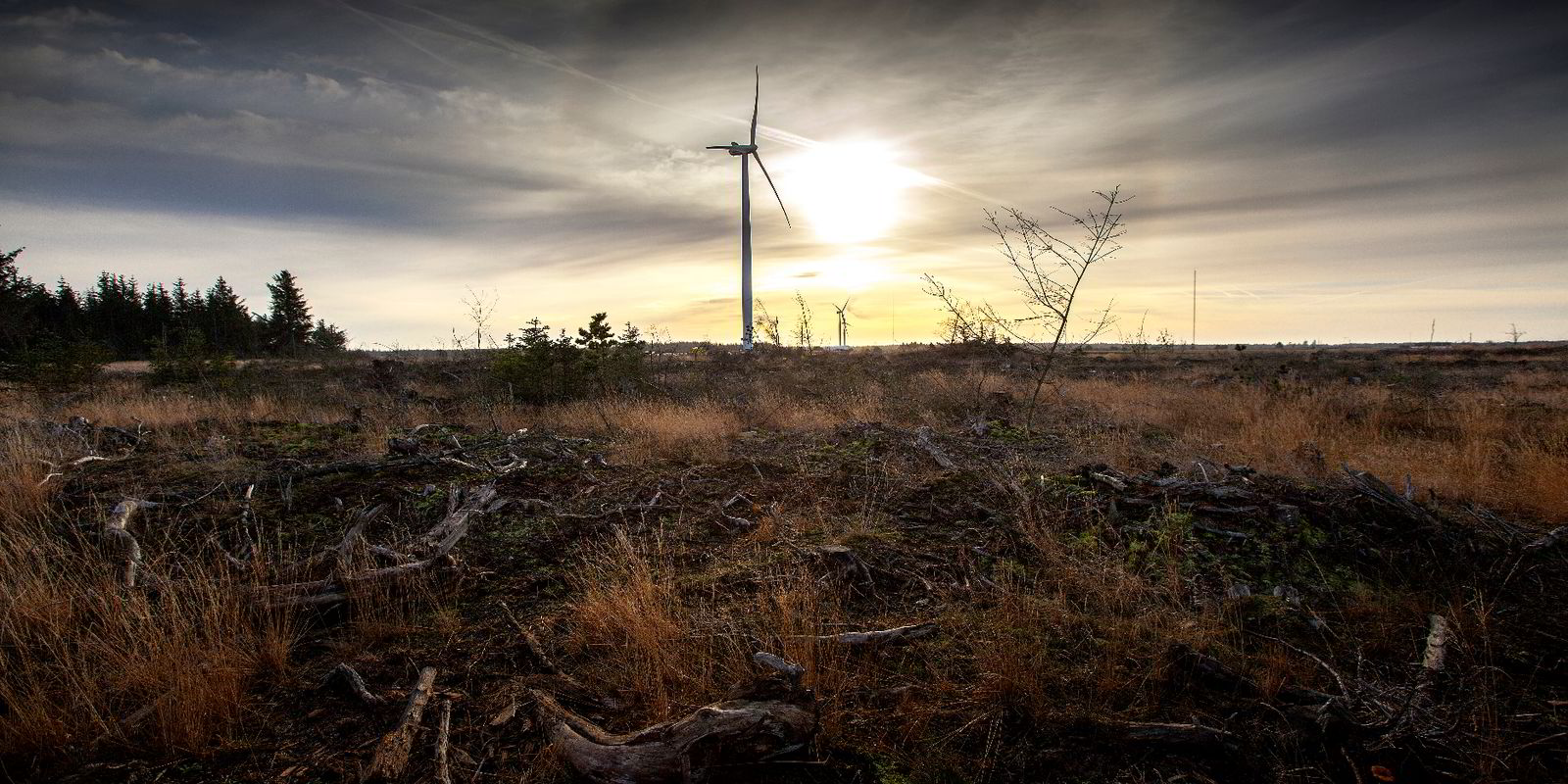Operating with well-rehearsed precision under clear blue skies, an eight-person installation crew worked from dawn to dusk to complete blade installation on Vestas’ newest turbine at the Østerild test centre in northern Denmark.
Watching the final 66.7-metre blade being lifted into the air, Jan Hagen, vice president, product strategy for Vestas, told Recharge: “The V136-3.45MW is a key product innovation that we expect to have an impact globally, both in our mature markets in Europe and North America, but also in Asia and emerging markets.
“The ambition of Vestas is to reduce the cost of energy faster than the market and to get solutions out to drive markets forward. With the introduction of the V136 we’re confident in our delivery of those goals.”
Hagen added: “Our confidence in the V136 across the globe is a reason for our establishing a manufacturing footprint not only in Europe but also in China.”
Hagen described the V136-3.45 MW as an “integral, evolutionary step” in expanding Vestas’ 3MW turbine platform – something he said “is a considerable part of Vestas’ profitable growth strategy”.
A high-torque gearbox allows for larger blades and a rotor diameter of 136 metres that affords the machine a swept area of 14,527 sq metres, and with it increases in energy production compared with predecessors.
“The V136 beats turbines with comparable rotor diameters, even some with slightly larger rotor diameters. It’s significantly improving the cost of energy offered through the 3MW platform,” said Hagen.
Vestas will also make its Power Optimised Mode available for the V136-3.45MW, bringing capacity to up to 3.6MW. “This means reducing costs of energy further still. Depending on site conditions, we can expect up to 2.5% gains in energy production.”
Since launch in 2015, the turbine’s operational range has been extended to include medium wind (IEC IIB) conditions.
Vestas has also given attention to the turbine’s noise emissions.
“It’s a part of Vestas’ product strategy to find an optimal balance between maximum power performance and reduced sound power levels. In the V136 we have a blade design targeted to achieve balance between these factors.”
The blade’s serrated trailing edges “allow the turbine to spin faster, producing more energy, and still achieve desired sound power levels,” according to Hagen.
The company expects a sound level 105.5dBA at maximum energy production. Sound power modes allow for optimising the turbine’s sound profile to project specific requirements.
“Demand for this type of capability differs greatly from market to market. But there are a good number of markets, especially in mature regions, that are very sensitive to sound power emissions.”
Finn Kolind Christensen, chief platform manager for the 3 MW range, told Recharge:
“Completing the installation of the first turbine on track is an important milestone for the product platform team as we can now start the extensive test programme. It will take place over the coming months to validate the performance of the turbine before serial production in the second half of 2017.”
“We’re working hard on getting capacities in place to ship because we see very strong demand for this solution. We’re optimistic for first connections late 2017,” said Hagen.
